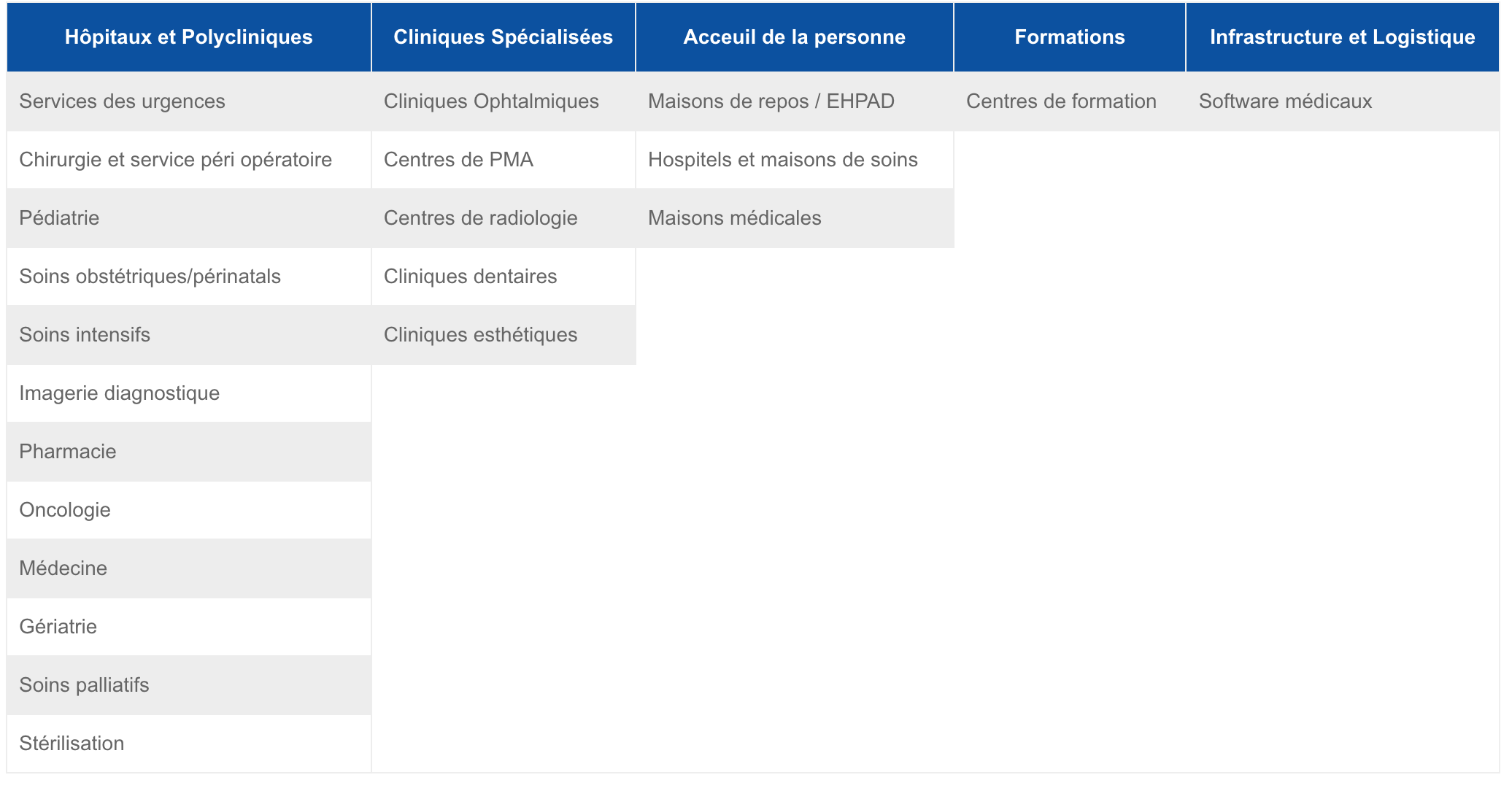Guides & Standards
Guides and standards
The guides
The guides are the very basis of the accreditation process. These guides will include all the criteria that institutions (hospitals, clinics, EPHAD, MR-MRS, training centers....) must meet in order to obtain accreditation.
These guides, which are extensively documented, will be made available to school staff in digital format and computerized tools will enable them to carry out various self-assessments. To avoid misunderstandings, the criteria in the guides will be clearly defined and explained. They will correspond exactly to what the auditors will assess during the accreditation visits.
These guides include standards and criteria.

The standards
Cross-cutting standards are grouped into 3 main categories:
Patient care
Governance and management (including logistics)
Potential risks (hygiene, medication management, crisis situations)
These 3 main categories of standards are applicable to all establishments.
Specific standards are specific to each activity depending on the establishment or activity.
There are 5 categories of specific standards. Those for :
⦁ hospitals and clinics
⦁ specialized clinics
⦁ community care (MR-MRS, EHPAD, medical homes...)
⦁ training courses
⦁ support and logistics
A multidisciplinary hospital will be assigned several families of standards, depending on the number of departments, each of which will be included in a guide specific to its various services. Whereas a clinic specialising in ophthalmology, for example, will be allocated the transversal standards and a specific standard for this speciality.
In these families of norms, there are the mandatory criteria which must be complied with systematically. Failure to comply with these requirements may result in refusal of accreditation. This clearly refers to basic hygiene measures such as hand hygiene, the implementation of an operation checklist or the failure to respect patients' rights. And these are just a few examples. These mandatory criteria are specifically marked in the guidelines and auditors will pay particular attention to them during their visits.
The criteria
Each of these guides includes criteria which are concrete objectives to be achieved. These criteria are therefore measurable and can be assessed in two ways:
- Either they are respected or not (yes or no). For example "The institution has a written policy and procedures to prevent workplace violence".
- Or they are applied more or less partially or fully, everywhere in daily life. In this case the evaluation will be based on a scale.
Guides and standards
| Hospitals and Polyclinics | Specialised Clinics | Reception of the person | Training | Infrastructure and Logistics |
|---|---|---|---|---|
| Emergency services | Ophthalmic clinics | Nursing homes / EHPAD | Training centers | Medical software |
| Surgery and perioperative service | MAP Centers | Hospitals and nursing homes | ||
| Paediatrics | Radiology centers | Medical Centers | ||
| Obstetric/perinatal care | Dental clinics | |||
| Intensive care | Aesthetic clinics | |||
| Diagnostic imaging | ||||
| Pharmacy | ||||
| Oncology | ||||
| Medicine | ||||
| Geriatrics | ||||
| Palliative care | ||||
| Sterilization |

